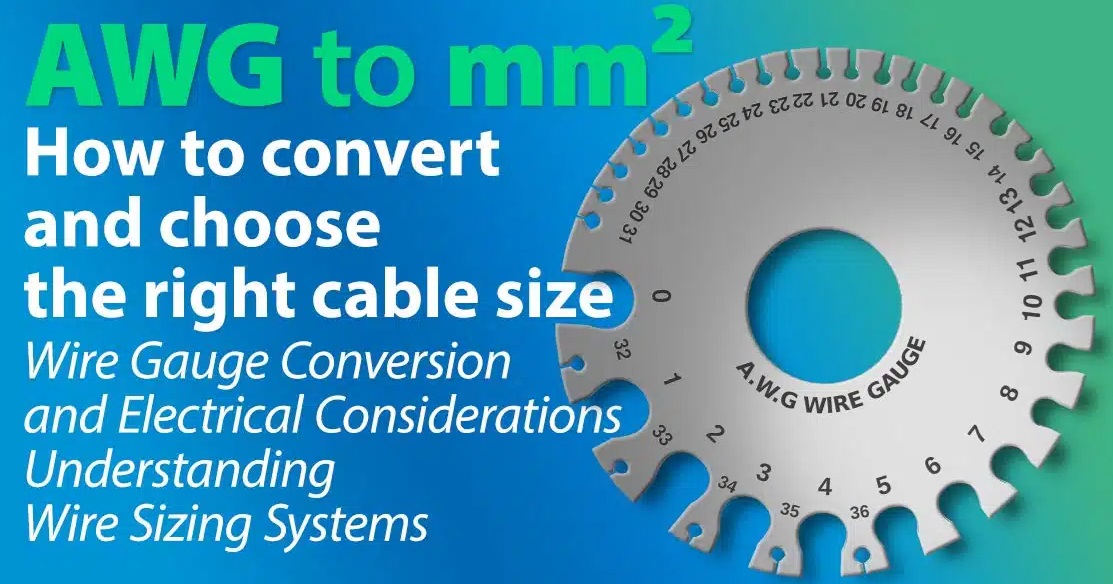
A common requirement for technical professionals working on electrical projects is to understand wire sizing, including the differences that can apply to how this aspect is handled around the world.
One conversion that frequently needs to be made for electrical projects is from American Wire Gauge (AWG) to square millimeters (mm2). The latter is a measurement of the actual physical area of the wire’s cross-section, known as the cross-sectional area (CSA).
The Background of AWG Conversions to Square Millimeters
The fact that wiring systems vary internationally – AWG being commonly used in North America, while many international codes stipulate that conductor sizes be specified in mm2 – means that if you are responsible for this aspect of a project, you will need to be vigilant in your efforts to ensure accuracy.
Only a truly accurate wire gauge conversion process, whenever it is needed, will give you an accurate reading when you are trying to work out how many square millimetres a particular AWG number will be.
The Right Digital Tool Can Help Take the Stress Out of Converting From AWG
AWG sizing doesn’t fit neatly within rounded metric or imperial units of measurement. So, it can be a complex and confusing process to try and convert AWG to mm2 in a manual fashion.

One important thing to know about, is the inversely and logarithmically proportional nature of AWG sizes. In other words, as the gauge number goes up, the wire diameter decreases.
This means that a 10 AWG wire, for instance, is much thicker than a 20 AWG one – in fact, the former has approximately 10 times more area than the latter.
Fortunately, you don’t actually need to carry out this conversion “by hand”. You can, instead, convert American Wire Gauge (AWG) to mm2 with this handy tool on the RS Online website. You simply need to enter the AWG number, and the tool will present you with the wire’s diameter in millimeters, and its cross-sectional area (CSA) in square millimeters.
3 Reasons Why Accuracy in Wire Gauge Conversion Is of Critical Importance
Below are several reasons for accurate wire gauge conversion being a non-negotiable requirement in an electrical project:
The Implications for Safety
Getting your conversion from AWG to mm2 wrong – and therefore ending up with a wire that is not the appropriate size for where it is installed – can bring the risk of the wire overheating.
This could lead to such consequences as insulation failure, damage to the circuit, and even fires – thereby potentially putting life and limb at risk.
The Need to Use a Legally Compliant Wire Size
Regulatory standards around the world make clear that certain minimum conductor sizes must be used for certain currents. The larger the current, the greater the thickness of the wire you can expect to need to use.
Getting your AWG-to-mm2 conversion accurate will allow you to ensure compliance with the relevant regulations in the part of the world where you are carrying out the electrical installation. In the case of the UK, for instance, you should refer to the IET Wiring Regulations .
The Impact on Performance and Efficiency
If your attempted wire gauge conversion goes wrong and gives you an undersized wire, this can detrimentally affect the performance of the system you have installed.
When, on the other hand, you get your conductor size right, this will help to reduce resistive losses and minimise voltage drop across long runs.
All in all, then, using a reputable digital tool to ensure consistently accurate AWG-to-mm2 conversions can be time more than well-spent, in light of the unfolding benefits this can have for so many aspects of an electrical installation.



